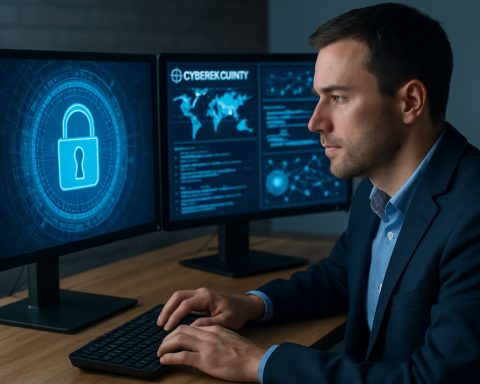- New-generation batteries from CATL and CSI aim to revolutionize efficiency and sustainability in commercial transport.
- These batteries boast a specific energy of 175Wh/kg and an energy density of 270Wh/L, promising long lifespan warranties.
- CATL’s Tectrans B cell, designed for electric buses, offers up to 1.5 million kilometers of lifespan and substantial economic benefits.
- Targeting various commercial vehicles, the “Super Long-Life” series reduces downtime and replacement costs.
- With a September launch, OEMs are eager to adopt these batteries, signaling a paradigm shift towards more sustainable transport solutions.
A whisper of change sweeps across the commercial transport landscape as a new generation of batteries sparks anticipation. These aren’t just any power units; they’re life-changers—grand architects set to redefine efficiency and sustainability in a realm dominated by time and reliability. Designed meticulously by Chinese battery behemoth CATL and assembled by Coulomb Solutions Inc. (CSI) for North America, these batteries pack a potent punch of innovation and promise.
Imagine a power source that hums with a specific energy of 175Wh/kg and nestles a hefty energy density of 270Wh/L within its compact form. This is not just a feat; it is a revolution encapsulated in chemistry—a promise of longevity with a warranty that dares to stretch across the battery’s entire lifespan. As commercial vehicles gear up with these advanced packs, an electrifying aura of resilience and endurance fuses with the future.
CATL, known for pushing boundaries, debuted a similar marvel in the Tectrans B cell tailored for electric buses. With whispers of an almost identical energy capacity and a lifespan stretching 15 years or up to 1.5 million kilometers, it promised not only endurance but a gateway to substantial economic relief for fleet operators worldwide.
Coulomb’s CEO, David Mazaika, paints a vivid picture of fleets no longer shackled by the heavy yoke of frequent battery replacements. Imagine fleets—a procession of last-mile delivery vans, robust transit buses, trustworthy school carriers, mighty trains, and even fierce marine vessels—charging forward with undeterred momentum. These batteries, dubbed the “Super Long-Life” series, emerge as an economic savior, extinguishing the specter of unplanned downtime and unforeseen costs.
As orders flood in for the impending September debut, a promise dances in the air. Original Equipment Manufacturers (OEMs) eagerly eye these systems, equipped with CSI’s pivotal support, ready to integrate and redefine the parameters of possibility.
This is not merely a technological advancement; it’s a paradigm shift. As we stand at the brink of this new era, the key takeaway resonates loudly: embracing longevity and efficiency in battery technology is crucial for the sustainable and economical evolution of commercial transportation. The future is charged—and it’s electrifying.
The Future of Commercial Transport: What CATL’s “Super Long-Life” Batteries Mean for Industry Shifts
Introduction
The commercial transport industry is on the cusp of a transformation driven by innovative battery technologies. CATL’s “Super Long-Life” batteries, assembled by Coulomb Solutions Inc. for North America, promise to revolutionize the sector with superior energy efficiency and sustainability. Let’s delve deeper into how these advancements will reshape commercial transportation, explore industry trends, and provide actionable insights for stakeholders.
Specifications and Unique Features
The CATL batteries boast impressive specifications:
– Specific Energy: 175 Wh/kg
– Energy Density: 270 Wh/L
– Lifespan: Up to 15 years or 1.5 million kilometers
These features translate to longer operational hours and reduced maintenance for commercial vehicles, offering a significant advantage in logistics and fleet management.
Industry Trends and Market Forecast
The shift towards electric commercial vehicles is accelerating, driven by environmental regulations and the global push for sustainability. According to McKinsey & Company, the electric vehicle market is expected to grow exponentially, with commercial vehicles playing a pivotal role in this expansion. This trend amplifies the demand for high-capacity, long-life batteries like those from CATL, solidifying their market relevance.
Real-World Use Cases
The batteries will impact several areas:
– Last-mile delivery vans: Reduced downtime and operating costs, allowing for more reliable delivery schedules.
– Transit buses: Longer cycles between recharges, enhancing route efficiency and passenger convenience.
– School carriers: Improved safety and operational endurance, critical for daily reliability.
– Trains and marine vessels: Enhanced power support for electric and hybrid operations, promoting greener practices.
Pros and Cons Overview
Pros:
– Extended lifespan and operational efficiency
– Lower total cost of ownership due to less frequent replacements
– Significant reduction in carbon footprint
Cons:
– Initial cost may be higher compared to conventional batteries
– Transition and retrofitting challenges for existing fleets
Insights and Predictions
The improved longevity and efficiency of CATL’s batteries present a new horizon for fleets and OEMs. With further advancements, battery technology will likely support even greater energy densities and quicker recharge times, essential for adopting electric vehicles industry-wide.
Actionable Recommendations
1. Fleet Operators: Evaluate long-term cost benefits while considering the transition to CATL’s battery systems. Monitor regulatory incentives that support electrification.
2. OEMs: Invest in the integration of these batteries to stay ahead in the competitive market and meet sustainability goals.
3. Policy Makers: Develop infrastructure that supports widespread adoption of electric vehicles, including charging stations and battery recycling initiatives.
Conclusion
CATL’s “Super Long-Life” batteries signify a leap forward in commercial transport efficiency and sustainability. By embracing this advancement, industries can significantly reduce operational costs and align with global sustainability objectives. Prepare for an electrifying future by considering these strategic shifts today.







